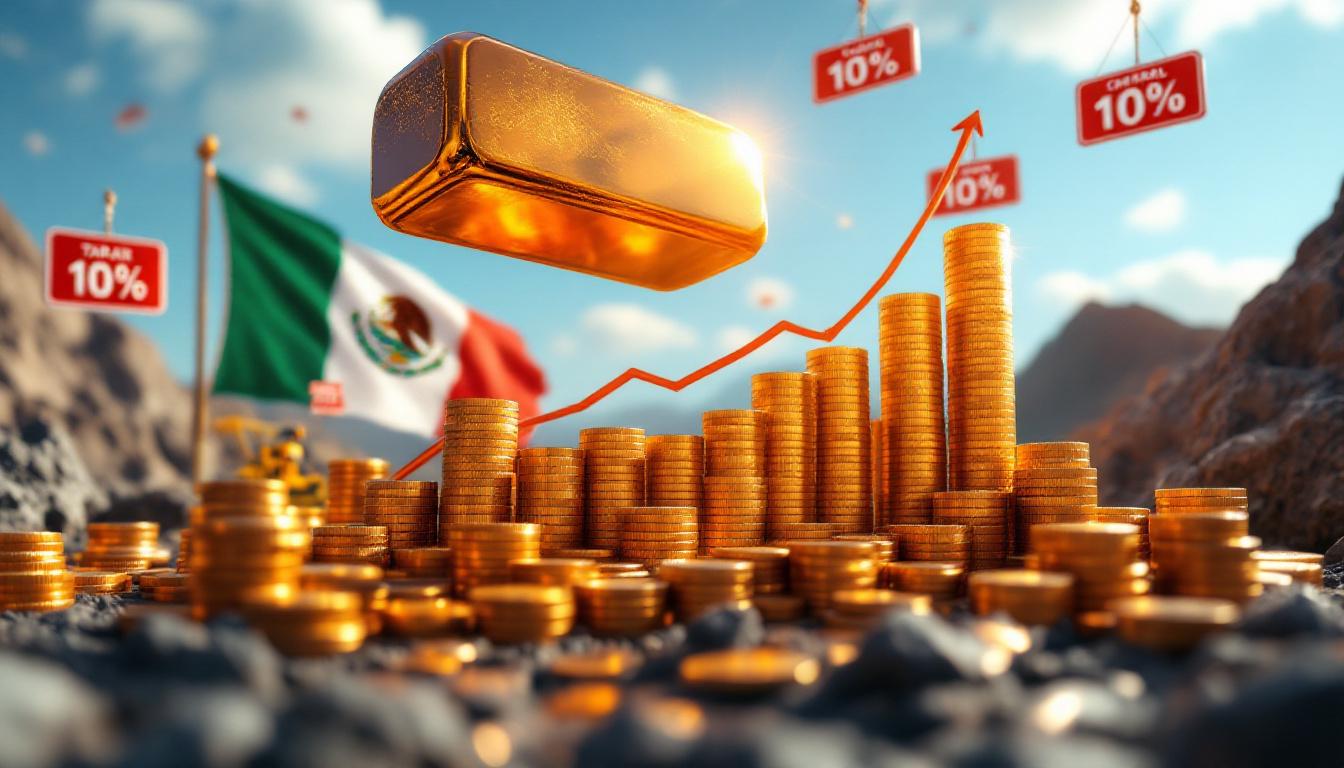Indonesia Mining Ministry Proposes 18 Development Projects for Danantara Funding
Indonesia's mining sector is poised for a major transformation as the Ministry of Energy and Mineral Resources recently handed over 18 development projects worth $38.6 billion to Danantara Indonesia, the country's sovereign wealth fund. This strategic initiative, announced on July 22, 2025, represents a significant step in President Prabowo Subianto's ambitious economic agenda aimed at boosting domestic processing industries and achieving an 8% economic growth target by 2029.
Energy and Mineral Resources Minister Bahlil Lahadalia expressed confidence in the fund's capabilities, stating that "Danantara had the capacity to finance and manage the projects" following the government's completion of initial feasibility studies on all proposals.
The proposed projects span multiple sectors and align with Indonesia's broader strategy to move up the value chain from raw material exports to higher-value processed goods, creating employment opportunities while strengthening the nation's economic resilience amidst ongoing mining industry evolution.
What is Danantara Indonesia and Its Role in National Development?
Understanding Indonesia's Sovereign Wealth Fund
Danantara Indonesia was launched in 2025 under President Prabowo Subianto's administration as the country's flagship sovereign wealth fund. Unlike traditional SWFs that primarily focus on overseas investments, Danantara serves as the principal vehicle for achieving Indonesia's ambitious 8% economic growth target by 2029.
The fund operates with a unique structure, managing shares of state-owned enterprises and strategically reinvesting dividends into commercial projects of national significance. This approach ensures that profits from state assets are channeled back into domestic development rather than dispersed.
In a significant boost to its investment capabilities, Danantara recently secured a $10 billion credit line, expanding its capacity to fund large-scale infrastructure and industrial projects across the archipelago. This financial leverage allows the fund to take on more ambitious projects that might otherwise struggle to secure traditional financing.
Strategic Objectives of Danantara
Danantara's primary mission centers on accelerating domestic processing industries—a key pillar of President Prabowo's economic vision. By investing in downstream industries, the fund aims to capture more value from Indonesia's abundant natural resources within national borders.
The fund operates under a mandate to support the president's top economic agenda priorities, particularly those that enhance Indonesia's industrial self-sufficiency and reduce dependency on imports. This strategic focus reflects a shift from the traditional export-oriented model toward one that emphasizes domestic value addition through mineral beneficiation opportunities.
Danantara evaluates potential investments based on both commercial viability and national strategic importance, seeking projects that can deliver sustainable economic growth while addressing critical gaps in Indonesia's industrial landscape. This dual-criteria approach ensures that investments generate financial returns while advancing national development objectives.
What Projects Has the Mining Ministry Proposed?
Overview of the $38.6 Billion Investment Package
The mining ministry's comprehensive proposal encompasses 18 development projects with a combined value of $38.6 billion—representing one of the largest coordinated investment packages in Indonesia's recent history. These projects have undergone rigorous initial feasibility studies conducted by government agencies before being transferred to Danantara for further assessment and implementation.
The formal handover on July 22, 2025, marks a transition from conceptual planning to practical execution, with Danantara now responsible for detailed financial structuring, partnership arrangements, and implementation timelines. This transfer reflects the government's confidence in the fund's capacity to manage complex, large-scale industrial developments.
The proposed projects align closely with Indonesia's national resource development strategy, which aims to transition from exporting raw materials to becoming a producer of processed goods. This strategy seeks to capture more value from the country's natural resources while creating higher-skilled employment opportunities for Indonesians.
Breakdown of Priority Project Categories
The 18 projects fall into three distinct categories, each addressing specific aspects of Indonesia's industrial development needs:
-
Minerals and Coal Processing (8 projects): These facilities aim to transform Indonesia's abundant mineral resources—including nickel, copper, and coal—into higher-value products such as refined metals and petrochemicals. By processing these materials domestically rather than exporting them in raw form, Indonesia can capture significantly more value from its natural endowment.
-
National Energy Security (2 projects): These initiatives focus on enhancing Indonesia's energy independence through strategic infrastructure developments. They address critical vulnerabilities in the country's energy supply chain while reducing reliance on imported fuels.
-
Energy Transition and Agricultural/Fishery Product Processing (8 projects): This diverse category encompasses renewable energy facilities and value-added processing for Indonesia's agricultural and fishery outputs. These projects support Indonesia's climate commitments while modernizing traditional economic sectors.
The balanced distribution across these categories demonstrates a comprehensive approach to industrial development, addressing immediate economic needs while positioning Indonesia for long-term sustainable growth in emerging sectors.
How Will These Projects Transform Indonesia's Resource Sector?
Key Infrastructure Developments
The proposed projects include several transformative infrastructure developments that could reshape Indonesia's industrial landscape:
-
Oil Refineries and Storage Facilities: New refineries will enhance Indonesia's energy independence by increasing domestic processing capacity for crude oil, reducing reliance on imported finished petroleum products. Modern storage facilities will improve energy security by creating strategic reserves.
-
Solar Panel Manufacturing Plants: These facilities will support Indonesia's renewable energy transition while creating a domestic supply chain for solar technology. Local manufacturing reduces costs for Indonesia's own renewable energy projects while potentially creating export opportunities.
-
Biofuel Production Facilities: Specialized plants will produce sustainable aviation fuel and other biofuels, positioning Indonesia as a leader in the growing market for low-carbon transportation fuels. These facilities leverage Indonesia's agricultural resources to create high-value products.
-
Iron and Alumina Smelters: New metallurgical facilities will process Indonesia's mineral resources into industrial-grade metals, supporting downstream manufacturing while reducing dependency on imports. These smelters represent a critical step in developing a complete industrial value chain.
These infrastructure projects are designed to address critical gaps in Indonesia's industrial capacity, creating the foundation for a more self-sufficient and diversified economy with a focus on critical minerals transition.
Economic Impact Projections
The economic benefits of these projects extend far beyond the initial construction phase:
-
Job Creation: The projects are expected to generate thousands of direct employment opportunities across multiple regions, with even more indirect jobs created through supply chain effects. Importantly, many of these positions will require specialized skills, creating pathways for higher-wage employment.
-
Increased Value-Added Exports: By processing raw materials domestically, Indonesia can capture a larger share of the value chain, potentially increasing export revenues while reducing vulnerability to commodity price fluctuations. This shift from raw material exports to finished and semi-finished goods represents a fundamental economic transformation.
-
Reduced Dependency on Imports: Local production of previously imported goods—from refined petroleum to processed metals—will improve Indonesia's trade balance while enhancing economic resilience. This import substitution effect could significantly reduce Indonesia's current account deficit.
-
Technology Transfer: Partnerships with international firms, particularly in emerging sectors like renewable energy manufacturing, create opportunities for knowledge and technology transfer that can accelerate Indonesia's industrial capabilities. These partnerships lay the groundwork for Indonesian companies to develop independent expertise over time.
What Financing Models Will Support These Developments?
Danantara's Investment Approach
Danantara employs a sophisticated investment framework for evaluating and financing these major projects:
-
Investment Criteria: Each project must meet specific criteria related to strategic alignment, financial viability, environmental sustainability, and socioeconomic impact. This multi-dimensional assessment ensures that funded projects deliver both commercial returns and broader development benefits.
-
Financing Options: As Danantara CEO Rosan Roeslani explained, "The financing can come from Danantara, state-owned enterprises…" This flexible approach allows the fund to tailor financing structures to each project's specific requirements and risk profile.
-
State-Owned Enterprise Participation: Strategic collaboration with Indonesia's SOEs leverages existing operational expertise and infrastructure while sharing investment costs. This approach maximizes the impact of public resources while ensuring project alignment with national priorities.
-
Private Sector Engagement: Roeslani also emphasized that Danantara can "invite domestic or foreign private companies to make sure we can employ the best technology." This openness to private participation reflects a pragmatic approach that prioritizes project success over ideological preferences.
Danantara's $10 billion credit line provides substantial financial firepower, but the total $38.6 billion investment required for all projects will necessitate additional capital sources and creative financing arrangements.
Public-Private Partnership Opportunities
The scale and complexity of these projects create numerous opportunities for productive public-private collaboration:
-
Technology Partnerships: International firms with specialized expertise can contribute technical knowledge and proven systems, ensuring projects employ world-class technologies and methodologies. These partnerships accelerate Indonesia's industrial learning curve.
-
Capital Sharing Arrangements: Risk-sharing structures allow private investors to participate in projects while limiting exposure to specific aspects that align with their expertise and risk tolerance. These arrangements can make otherwise challenging projects financially viable.
-
Knowledge Transfer Frameworks: Structured programs ensure that foreign expertise gradually transfers to local professionals, building Indonesia's long-term technical capabilities. These knowledge transfer requirements can be formally incorporated into partnership agreements.
-
Long-term Operational Partnerships: Joint ventures and other collaborative models create aligned incentives for sustained operational excellence beyond the initial construction phase. These enduring partnerships ensure projects deliver value throughout their lifecycle.
As Roeslani noted, engaging private partners helps ensure "the best technology" is employed, reflecting a recognition that technical excellence is crucial for these projects' long-term success.
How Does This Initiative Support Indonesia's Long-Term Economic Vision?
Alignment with National Development Goals
The proposed projects directly support several core elements of Indonesia's long-term economic vision:
-
Resource Sovereignty: By processing raw materials domestically, Indonesia reduces dependence on foreign processing capacity while capturing more value from its natural resources. This approach reflects a strategic shift from being primarily a commodity supplier to becoming a producer of finished goods.
-
Higher-Value Exports: Processed goods command premium prices in international markets compared to raw materials, potentially transforming Indonesia's export profile and improving terms of trade. This value-added approach creates resilience against commodity price volatility.
-
Supply Chain Resilience: Domestic production of critical materials and components reduces vulnerability to international supply disruptions, enhancing national economic security. Recent global supply chain challenges have highlighted the importance of this self-sufficiency.
-
Technical Capabilities: Industrial projects create opportunities to develop advanced technical skills and institutional knowledge that can be applied across sectors. This human capital development may ultimately prove more valuable than the physical infrastructure itself.
These strategic elements align perfectly with President Prabowo's stated priority of accelerating domestic processing industries—moving Indonesia up the value chain while creating more sophisticated economic activities.
Potential Economic Transformation Outcomes
If successfully implemented, these projects could catalyze broader economic transformation:
-
Diversification Beyond Raw Material Exports: Reducing reliance on unprocessed commodity exports creates a more balanced and resilient economic structure. This diversification protects against the "resource curse" that has trapped many resource-rich countries in boom-bust cycles.
-
Higher-Skilled Employment Opportunities: Processing industries typically require more technically skilled workers than extraction activities, potentially raising wage levels and living standards. This skills development creates a virtuous cycle as higher wages support increased domestic consumption.
-
Technology Ecosystem Development: Industrial clusters often generate spillover benefits, creating opportunities for supporting industries, specialized service providers, and innovation hubs. These ecosystems can become self-reinforcing centers of excellence.
-
Increased Foreign Direct Investment: Successful initial projects demonstrate Indonesia's industrial capabilities, potentially attracting additional foreign investment in related sectors. This investment multiplier effect can accelerate economic development beyond the initial projects.
What Challenges Must Be Addressed for Successful Implementation?
Regulatory and Implementation Considerations
Several regulatory and practical challenges must be navigated for successful project implementation:
-
Environmental Impact Assessment Requirements: Indonesia's AMDAL (Analisis Mengenai Dampak Lingkungan) process requires thorough environmental review, which can significantly impact project timelines and design. Projects must balance economic objectives with environmental protection.
-
Land Acquisition and Community Engagement: Securing necessary land while addressing community concerns requires careful stakeholder management and fair compensation mechanisms. Inadequate attention to community relations has derailed numerous previous infrastructure projects in Indonesia.
-
Permitting Timelines and Regulatory Approvals: Complex projects require numerous permits from various government agencies, creating coordination challenges and potential delays. Streamlining these processes without compromising oversight remains a persistent challenge.
-
Infrastructure Readiness: Many projects depend on supporting infrastructure—power supplies, transportation networks, water systems—that may require simultaneous development or upgrading. This infrastructure interdependence creates additional coordination challenges.
The government's completion of initial feasibility studies represents important groundwork, but substantial regulatory hurdles remain before projects can break ground.
Market and Economic Factors
External market conditions will significantly influence project success:
-
Global Commodity Price Fluctuations: Dramatic changes in input or output prices can fundamentally alter project economics, requiring flexible implementation approaches. Robust sensitivity analysis is essential for identifying vulnerable projects.
-
Competition from Established International Producers: New Indonesian facilities must compete with efficient, experienced international producers, particularly in export markets. Careful positioning and phased capacity development may be necessary to avoid market disruption.
-
Technology Adoption Challenges: Implementing cutting-edge technologies requires specialized skills that may not be readily available in Indonesia, necessitating comprehensive training programs. Technology transfer agreements must include practical knowledge-sharing mechanisms.
-
Workforce Development Needs: Specialized industrial operations require workers with specific technical skills, potentially creating short-term labor constraints until training programs can meet demand. Coordinated workforce development strategies must align with project implementation timelines.
Addressing these challenges requires not only financial resources but also institutional capacity, technical expertise, and strategic patience. Danantara's role in coordinating these complex factors will be crucial to project success.
FAQ: Indonesia's Mining Development Projects
What is the total investment value of the proposed projects?
The Mining Ministry has proposed 18 development projects with a combined value of $38.6 billion for potential funding through Danantara Indonesia, according to the official announcement on July 22, 2025.
Who will make the final investment decisions for these projects?
Danantara Indonesia, led by CEO Rosan Roeslani, will assess each project against the fund's investment criteria before making final investment decisions. The fund may also involve state-owned enterprises and private companies in project financing and implementation.
What types of projects are included in the proposal?
The proposal includes 8 mineral and coal processing facilities, 2 energy security infrastructure projects, and 8 projects focused on energy transition and agricultural/fishery product processing. Specific examples include oil refineries, solar panel manufacturing plants, biofuel production facilities, and mineral smelters.
How will these projects be financed?
As Danantara CEO Rosan Roeslani explained, financing may come from multiple sources, including direct investment from Danantara, participation from state-owned enterprises, and partnerships with domestic or foreign private companies. This flexible approach allows customized financing solutions for each project.
What is the timeline for project implementation?
While specific timelines have not been announced, the formal handover to Danantara on July 22, 2025, marks the beginning of the detailed assessment and implementation planning phase. Project timelines will likely vary based on complexity, financing arrangements, and regulatory requirements.
Further Exploration
Those interested in Indonesia's economic development initiatives can monitor Danantara's official announcements for updates on project selection and implementation progress. Additionally, Indonesia's Ministry of Energy and Mineral Resources publishes regular updates on the country's resource development strategy and major projects.
The proposed projects represent a significant opportunity to transform Indonesia's position in global value chains while creating sustainable economic growth and higher-skilled employment opportunities. Their successful implementation could mark a turning point in Indonesia's economic development trajectory, potentially establishing a critical minerals reserve and prompting new mining consolidation strategies across the region.
Disclaimer: This article contains forward-looking statements about project outcomes and economic impacts. Actual results may vary based on market conditions, implementation challenges, and policy changes. Readers should not interpret this analysis as investment advice.
Interested in Spotting Major Mineral Discoveries Before the Market?
Gain a critical edge in ASX mining investments with Discovery Alert's proprietary Discovery IQ model, delivering real-time notifications on significant mineral discoveries the moment they're announced. Explore historic returns from major discoveries and begin your 30-day free trial today at Discovery Alert's discoveries page.




